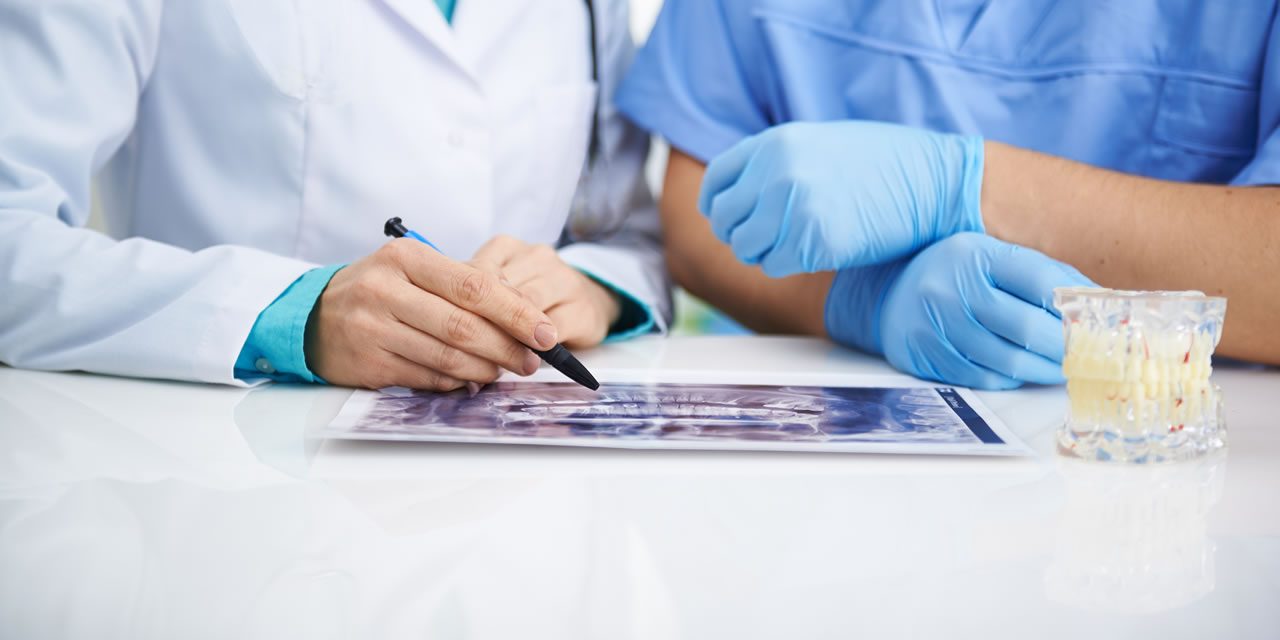
Intraoral Cameras and Scanners
Many dental practices use intraoral cameras to look closely inside the mouth. Intraoral cameras allow dentists to capture images of the teeth and mouth for patient records. These tools often aid in patient education, allowing dentists to show patients close-up images of diagnosed issues.
Intraoral cameras are digital imaging tools used by dentists to create images of the teeth and mouth. The cameras are small enough to fit comfortably into the mouth on the tip of an intraoral wand that can be moved over and around the teeth.
How Intraoral Scanners Work
Intraoral (inside the mouth) cameras take high-resolution images of the teeth and mouth using a small camera. In most cases, after the images are captured, an imaging software (such as computer-aided design or computer-aided manufacturing (CAD/CAM) applications) is used to piece hundreds of images together to create a digital 3D model of the intraoral cavity.
Dentists can use the cameras (also sometimes called scanners) for different purposes and to capture different types of images. For example, a single tooth that requires a restorative procedure could be enlarged on its own. The camera could also be used to create images of a full arch or both arches of teeth. Finally, a dentist or periodontist may use intraoral cameras to capture images of the soft tissues of the mouth, such as the gums and soft palate.
The Benefits of Intraoral Cameras
Preventative Dentistry
Many of the issues and conditions that affect the teeth and soft tissues of the mouth are preventable. Intraoral cameras are essential in preventative dentistry because they can catch small abnormalities in the mouth before they become more significant problems. Moreover, dentists can show patients exactly where oral care needs to be focused so they can use at-home oral hygiene to support dental treatments.
Reduced Chair Time
Intraoral cameras allow dentists to take accurate and detailed images of the teeth in a very short period of time. The scans are put also put together in real-time, which means dentists and patients can view the outcomes almost immediately after the images are captured. Compared to other imaging methods, such as dental x-rays, the entire imaging process can be completed very quickly, allowing patients to spend less time overall in the dental chair during an appointment.
High-Quality Images
Intraoral cameras are often used in treatment plans for cosmetic dentistry because they show minute details of the tooth structure. The images can be enlarged and viewed on a screen by a dentist and patient so that treatment plans can be outlined in more detail. This often puts patients at ease during treatments.
In the past, dentists relied on 2D x-ray imaging or on visual inspections of the teeth using LED lighting and other instruments. Today, digital imaging is used more routinely to capture full-colour details of the teeth from virtually every exposed angle.
Better Patient Records
Thanks to intraoral imaging techniques, dentists can store digital impressions of their patients’ teeth securely on computer files. This allows them to monitor ongoing conditions or concerns by comparing the current and past images. Dentists can also use these records to show a patient the comparative images from before and after a procedure, which tends to result in higher patient satisfaction.
Learn More About Dental Imaging and Diagnostic Technologies
Intraoral cameras are just one type of technology dentists may use to aid in the prevention, diagnosis, and treatment of oral and dental conditions. Dentists also use a range of imaging and diagnostic tools, including dental x-rays, CBCT scanners, and the DIAGNOdent system.
Find a Local Dental Office
If you need to find dental care in Canada, you can search through the 123Dentists network of dental professionals to find a dental clinic near you. Our dentists, dental hygienists, and dental specialists have the skills and training to provide comprehensive oral health, no matter where you are starting from.
